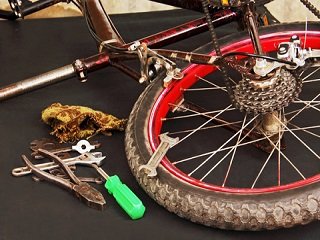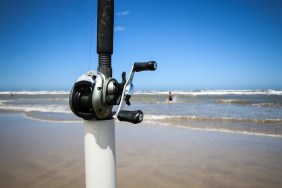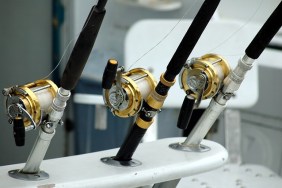 I don’t know about you, but fall is my favorite season, for many reasons. Football, comfort food, perfect weather—it all combines to create a great time of the year. It’s also one of my favorite seasons to go mountain biking. Just because I’m ready for the trail, though, it doesn’t always mean my bike is, and sometimes a little maintenance is required. Typically, most of us take our bikes to the shop if something’s wrong, but you can also do basic bike maintenance yourself. Here are a few ways to check if your bike is trail-ready before you take it out for a spin.
I don’t know about you, but fall is my favorite season, for many reasons. Football, comfort food, perfect weather—it all combines to create a great time of the year. It’s also one of my favorite seasons to go mountain biking. Just because I’m ready for the trail, though, it doesn’t always mean my bike is, and sometimes a little maintenance is required. Typically, most of us take our bikes to the shop if something’s wrong, but you can also do basic bike maintenance yourself. Here are a few ways to check if your bike is trail-ready before you take it out for a spin.
The first thing on your checklist should be giving your bike a good cleaning, tire to tire. Grab a hose and a bucket of warm, soapy water, and go to work. While you’re cleaning, check your chain. If it looks like it’s been through the ringer, you might need to use a degreaser. Steer clear of automobile degreasers that utilize harsh chemicals, as this can damage your bike. Citrus-based solvents, or Simple Green, work well and won’t damage your bike’s finish or plastic parts if used properly. Be sure to rinse your chain thoroughly after degreasing it. Also, use a scrub brush or a stiff toothbrush to clean the chain. You can even purchase chain scrubbers at any bike shop.
Pay close attention to the chain, front chain rings, rear sprockets, and rear derailleur when cleaning your bike. Those can get caked with grime over time, which will have an adverse effect on how your bike pedals and shifts. If the drive train is really dirty, it may be easier to remove the chain and wash it separately, which also gives you better access to the rest of the drive train for cleaning. To do this, take the chain apart at the master link or use the chain breaker on your bicycling multi-tool, if you have one. After the drive train is clean, relubricate the chain and reattach it.
It’s also smart to invest in chain lube from a bike shop, rather than use any all-purpose lubricating oil you may have lying around. Most bike lubes don’t get greasy, so they collect less grit and grime, which will make it easier to keep things clean in the long run. Use any lube sparingly, though—about a drop on each link. Allow the lube work in by rotating the chain backward, and then wipe off the excess with a clean rag.
One great way to see if your bike needs any further attention is to take a quick ride through your neighborhood. Shift through all the gears, front and back, to see if they’re in good shape. Shifting should be quick and fairly quiet, but if you hear or feel rattling, ghost shifting, jumping between gears, clunking, or any binding, they need some attention. Unless you’re adept at fixing them, it’s time to head to the bike shop. If you do decide to tackle the gears yourself, the problem could be as simple as increasing or decreasing the tension on the cables by adjusting the barrel adjuster on your shifter. If your cable tension is off, a twist or two on the adjuster may be all you need. More often than not, a little tweak here or there in opposing directions will do the job, but if it doesn’t work, twist the barrel back to where you started and consider taking your bike to a mechanic to figure it out.
There are simple things that you can do to keep your bike in top shape. Having basic knowledge about how your bike works is a good place to start, so familiarize yourself with your bike. Not only does this allow you to be more in tune with your bike, but having that knowledge helps you talk intelligently to a mechanic and spot small problems before they turn into big ones.








